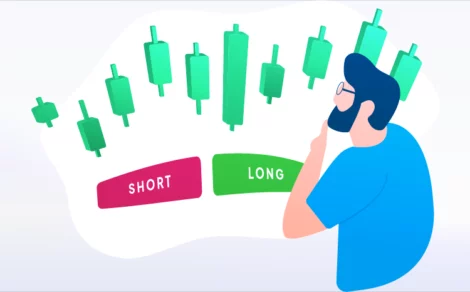The holding period is the timeframe for which an investor holds a stock. However, it plays a crucial role in investment strategy, tax implications, and overall portfolio performance.
Whether you are a beginner or a seasoned investor, knowing your holding periods can help you make smarter, more informed decisions. In this blog, we are going to learn what is a holding period and learn about its calculation process along with formulas, and why you should know the concept for your investments.
Meaning of Holding Period
The holding period of stocks is the period between the purchase date of a share to the sale date of that share. This period is the deciding factor for the taxation of a stock market investment.
To determine the tax implications of your stock holdings, it is important to understand whether you are holding shares for the short term or the long term. Generally, if you hold a stock for more than one year, it is considered a long-term investment; anything less falls under short-term.
The duration of your holding period can significantly impact the tax rate applied to your capital gains.
Concept of Holding Period in Short and Long Positions
The holding period is how long an investor holds a share. In a short position, the holding period is measured from the date the short sale is executed to the date the shares are repurchased (to cover the short). In a long position, the holding period is the time between purchasing a security and selling it.
This duration is important for tax purposes. For a short position, it affects the overall profitability, and for a long position, it determines if the investment will be taxed on short-term capital gains or long-term capital gains.
Understanding the Average Holding Period for Stocks
Recent data from the New York Stock Exchange (NYSE), analysed by Reuters, shows that the average holding period for stocks is about 5.5 months. This represents a significant drop compared to the 1950s, when investors kept their shares for an average of eight years.
However, in India, the average holding period for funds is 2.2 years. This is comparatively higher compared to NYSE. If we look back 10 years earlier, the average holding period was 3.3 years.
This decline reflects a major shift in investment behaviour, driven by faster trading technologies, the popularity of short-term strategies, and easier access to real-time market information. As a result, modern portfolios tend to turn over much more quickly than they did in the past.
Rules for Holding Periods
The holding period for mutual funds in India determines whether your capital gains are classified as short-term or long-term, which directly impacts the tax you pay. For equity mutual funds, units held for 12 months or less are considered short-term, and gains are taxed at 20%. If held for more than 12 months, gains qualify as long-term and are taxed at 12.5% (for sales after July 23, 2024), with the first ₹1.25 lakh of gains exempt annually.
For debt mutual funds, the holding period threshold is 24 months for investments made after April 1, 2023; gains from units sold before 24 months are short-term and taxed as per your income slab, while those held longer are also taxed at your slab rate. Hybrid funds’ holding periods depend on their equity allocation. Understanding these rules is crucial for tax planning and optimising returns, as holding investments longer often leads to lower taxes and better compounding benefits.
How Long Do You Need to Hold a Mutual Fund?
You should hold equity mutual funds for more than 12 months to benefit from lower long-term capital gains tax. For debt funds, holding for over 24 months (for recent investments) is preferred, as shorter periods attract higher taxes. Always check your fund type and purchase date to plan your holding period effectively.
How Can You Calculate the Holding Period for Stocks?
Calculating the holding period of stock is a seamless process. The key is to determine whether the investment falls under a short-term or long-term category. This classification affects how your capital gains are taxed.
Suppose you buy shares of company “A” on 15th April and sell them on 15th August, at a profit. This means you hold it for four months, which is short-term. Hence, capital gains tax will be levied on you for short-term capital gains.
Here is the formula to calculate the holding period return:
Return = Income + (EOPV – IV)/IV
Here,
EOPV = End of the period value
IV = Initial value
Your holding period can influence your returns, making it positive or negative, depending on the EOPV when you sell your stock.
Importance of Holding Period in Stocks
The holding period for stocks is important in taxation and returns calculation. Here is a detailed overview of that.
- You can determine your actual returns on investment if you know the start and end dates of your investment tenure.
- The length of your holding period determines whether your gains will be taxed as short-term or long-term capital gains. If you hold your stock for more than 12 months, then it will be taxed as long-term capital gains. However, if you hold it for less than 12 months, your tax liability will be based on short-term capital gains.
- Understanding your holding period helps you estimate how much you owe in taxes and plan your investment strategy accordingly.
Final Thoughts
Understanding your stock holding period is essential for you to keep track of your taxes and returns on investments. It also helps you stay informed about potential dividends based on how long you’ve held your shares. You can even strategically time your exits, selling before 12 months if you are prepared for short-term capital gains tax, or holding longer to benefit from lower long-term capital gains rates.
Want to utilise this new knowledge? Torus Digital offers a seamless 3-in-1 trading and savings account, allowing you to invest in stocks and manage your deposits all in one place. Take control of your investments and simplify your financial journey with Torus Digital Share Market App.








